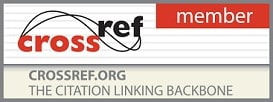Vol. 9, Issue 3, Part J (2025)
To study the effect of different physical factors i.e. temperatures, pH, carbon and nitrogen sources on the growth and development of Alternaria alternata, the causal agent of leaf spot of okra under in vitro condition
Dhaneshwari Sahu, RKS Tiwari and VK Nirmalkar
An experiment was conducted under in vitro condition to study the growth of Alternaria alternata at different pH levels i.e. 4.0, 5.0, 6.0, 7.0, 8.0 and 9.0, pH levels. The mycelial growth and sporulation were maximum at pH 6.0 (90.00 mm) followed by pH 7.0 (84.13 mm) and pH 5.0 (80.88 mm). Whereas, reduction in mycelial growth and sporulation was recorded at 4.0 (73.25 mm) and pH 9.0 (67.25 mm). The trend of data recorded at different temperatures indicated that the temperatures i.e. 25 °C (90.00 mm) and 30 °C (81.80 mm) were found to be optimum for the mycelial growth and sporulation of Alternaria alternata. Whereas, mycelial growth and sporulation were significantly affected at 20 °C (57.20 mm) and 35 °C (48.00 mm). Temperature i.e. 15 °C (31.40 mm) was found to be detrimental for the growth and sporulation of Alternaria alternata. Amongst carbon sources, Fructose (90.00 mm) was found to be optimum followed by Sucrose (85.00 mm), Dextrose (84.00 mm), Glucose (82.67 mm), Maltose (81.67 mm) and Lactose (80.50 mm) for the mycelial growth and sporulation of Alternaria alternata. Whereas, the growth and sporulation of Alternaria alternata were affected in Mannitol (57.20 mm). Amongst different nitrogen sources, Ammonium nitrate (90.00 mm) was found to be optimum for the mycelial growth and sporulation of Alternaria alternata and at par with control (90.00 mm) followed by Potassium nitrate (86.40 mm), Sodium nitrate (83.00 mm). Whereas, mycelial growth and sporulation were affected in Peptone (67.60 mm). Urea (17.60 mm) was found to be detrimental for the growth and sporulation of Alternaria alternata.
Pages: 772-778 | 576 Views 338 Downloads








